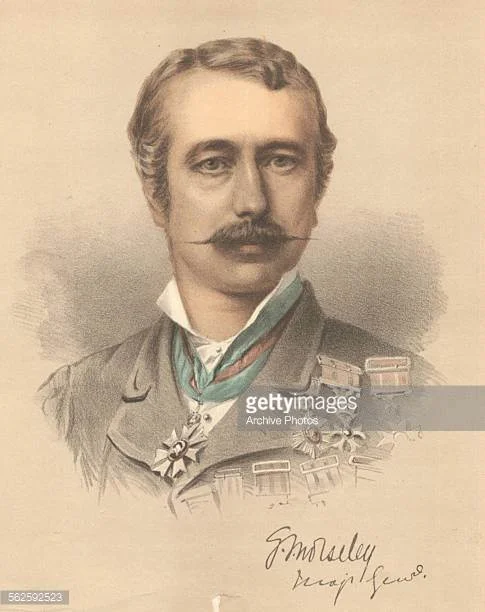Sir Garnet Wolseley was appointed Governor of the Gold Coast Protectorate on 13 August 1873 and went to the Gold Coast to make his plans before the arrival of his troops in January 1874. On 27 September 1873 a team of Royal Engineers landed at Cape Coast Castle. Their job was to expand the single file track that led to Kumasi 160 miles (260 km) away into a road that was suitable for troop movements. At the end of each day's march, roughly every 10 miles (16 km) a fortified camp would be built with 70 feet (21 m) long huts inside a stockade in an area that had been cleared of trees and undergrowth to provide some protection against hostile forces.
Bridges were built across streams using trees, bamboos and creepers for ropes and a major bridge across the 63 yards (58 m) River Pra was built using pre-manufactured pieces brought from Chatham, England. In total 237 bridges were built. Some of the camps were larger, such as at Prasu, next to the bridge, with a medical hut and a tower on a mound, stores, forge, telegraph office and post office. It was stocked with 400 tons of food and 1.1m rounds of ammunition. The labour was supplied locally. To start with, the locals did not know how to use European tools and would vanish into the forest if they heard a rumour that the Ashanti were nearby. Sickness, despite taking quinine daily, claimed many British engineers. Even so, the road progressed. By 24 January Prasu was reached with the telegraph line.
The first troops arrived in late December and from 1 January 1874 started marching along the road to the battle front, half a battalion at a time. The troops comprised a battalion from each of the Black Watch, Rifle Brigade and Royal Welsh Fusiliers, along with the 1st and 2nd West Indian Regiment, a Naval Brigade, two native regiments, Royal Artillery, Royal Engineers and Royal Marines. By 29 January, the road was more than half completed and they were close to Ashanti outposts. Skirmishing between the two forces had begun. Wolseley prepared to fight a battle, which came to be known as the “Sagrenti” War.
Wolseley commanded the expedition to the Ashanti, and, having made all his arrangements at the Gold Coast before the arrival of the troops in January 1874, was able to complete the campaign in two months and re-embark them for home before the unhealthy season began. This campaign made him a household name in Britain.
